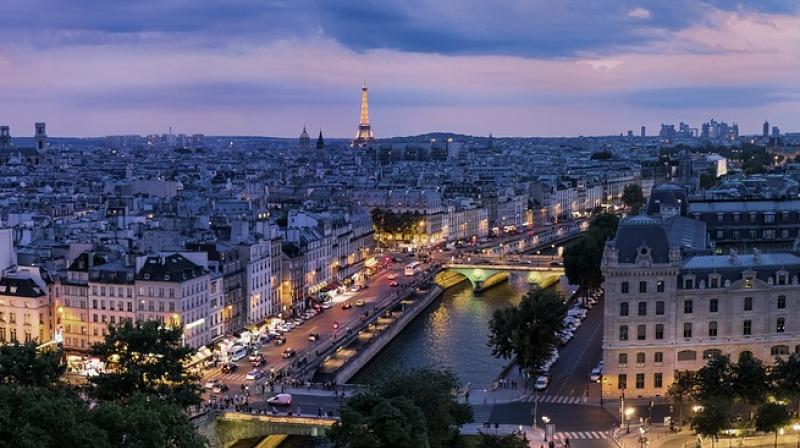Iconic Paris skyline to change?

Paris: Paris is known as one of the world’s most elegant cities, captivating visitors with the charms of Montmartre, the romance of the Left Bank, graceful architecture and tree-lined boulevards. But wait: changes are afoot.
In the run-up to the Olympic Games in 2024, the mayor has ambitious plans to pull the City of Lights into the modern era: relandscaping the gardens around the Eiffel Tower and constructing the first city-centre skyscraper since the 1970s.
In a country with enduring tension between preserving the past and innovating for the future, the plans have sparked immediate unease, especially when it comes to the skyscraper — a debate which dates to when the glass-and-steel pyramid-type structure was first proposed in 2008.
A Paris court threw out a number of legal challenges brought against the so-called Triangle Tower this month, handing Socialist Mayor Anne Hidalgo an important win if the 180-metre, 500-million-euro tower is to be finished as planned for the Olympics.
The design, which consists of reflective glass steps on two sides, looks not unlike a broader Shard, the slither of steel and glass that dominates London’s skyline.
It will be constructed a few kilometres south of the Tour Montparnasse, a tinted-glass, 210-metre block that has divided and angered Parisians since it was completed in 1973.
“I don’t like it,” said Vincent Julien, 66, looking towards Montparnasse from the verdant surroundings of the Luxembourg Gardens. “Quelle horreur!”
Asked about the new skyscraper, he was sceptical though not completely opposed. “I’m not against big buildings, big towers in Paris,” he said, “but you have to be careful.”
Seine Pedestrian Bridge
The other planned changes feature the area around Paris’ most famous landmark, the 130-year-old Eiffel Tower, which stands at the head of the Champs de Mars, a public park and important gathering place since the French Revolution.
Today, the 60-acre (25 hectare) green space is in many ways a victim of its popularity — more than 140,000 people visit it each day, but its relative lack of bathrooms and bins means it has also become popular for Paris’ vast rat population.
A competition to redesign the area, including access to the Eiffel Tower from across the river Seine, was won this month by London-based firm Gustafson, Porter and Bowman.
The plan, at an estimated cost of 72 million euros, involves turning the bridge across the river into a pedestrian-only space and creating a near-continuous cascade of greenery from the Trocadero on one side to the end of the Champs de Mars.
While undeniably contemporary, the project has been met with apprehension by locals and visitors, mirroring the anxiety Parisians have expressed about how to rebuild Notre-Dame Cathedral after the fire. “Paris for me, it’s something historic,” said Nunz Paolano, 20, a visitor from New Jersey in the United States. “I want to come and see what was here, not what’s new.”
Others suggest that while Paris, a city of some two million that draws over 40 million visitors a year, might be showing a willingness to be more innovative, it doesn’t always work.
“Changing something that’s so old and has already functioned perfectly fine, not trying to fix what actually is here but start something new,” said Julia Wraith, a 20-year-old exchange student. “I feel like Parisians do that a lot.”

